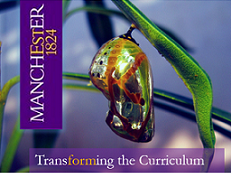Inspiration From Green School In Bali
When I was in 10 weeks pre-sessional course, the teacher showed us a video, it was a thirteen-minutes speech named “My green school dream” by John Hardy (Hardy, 2018), it impressed me and attracted my interest to this project. According to the speech and the website of the project, the green school in Bali was created to give children access to “real nature.”

The open teaching space created by the local bamboo material makes the learning process fully integrated with the natural environment. The curriculum framework covers experiential teaching, allowing children to engage with the real world to participate in practice and research. The school establishes children’s sense of responsibility for environmental crisis through exploratory practice education to cultivate the children who will concern and lead sustainable development in the future (Greenschool.org, 2018).
I think green school in Bali seems to be an excellent example to learn. It does not mean building schools without brick and concrete walls just like that in Bali, which is not only quite difficult to achieve, but also not sustainable if bamboo is not local plant. However, there are still content we can learn from the project. According to information and literature related to “green school”, I conclude some useful rules for it.
School-wide
The creation of a green school is a very broad job that involves the management of the school, staff, students, and even families of teachers and students. This means that while cultivating the consciousness of ecological development, carrying out environmental practice, schools encourage the effective participation of parents, communities, government and other personal agencies to work together according to their responsibilities and abilities to formulate ideas for the creation of “green schools”.
In the case of green school in Bali, people build green houses around school and bring their green industries there, so their kids can walk to school on the paths and live in a sustainable and healthy community.
Based on local conditions
Green schools use the environment as a resource for education. For students, the most direct environmental contact and educational resource is campus. Because there are significant differences in natural conditions, economic conditions, and cultural backgrounds in all regions, schools should combine local situation with effective using of human and natural resources, fully reflect the diversity of activities and ways of participation and actively promote green school project. In simple terms, every school can use something local and easily accessible in their lessons and activities to promote sustainability.
For example, tell children the importance of going easy on the papers can be difficult, however, teach them how to make papers with bamboo pulp (figure 1), which is a special course in green school in Bali, not only exercises their practical ability, but also develop their idea of valuing and recycling papers. The original materials in this activity are easy to get and low-cost because bamboo is a common native plant in Bali and grows quickly. When it comes to Manchester, things are different.
Manchester is not a suitable place for bamboo to grow, so it can be difficult to use bamboo. However, there are also many materials easily accessible and low-cost in Manchester can be used in sustainable education. My teacher Susan took us to Hulme Garden Centre in Manchester by a sustainability walk once, we passed by a school and Susan introduced some sustainable works to us, including wooden bird house, paper insect house, and greenhouse made of plastic bottles. These materials are easy to get, and the process of making these houses can be a suitable situation to not only teach children about the importance of biodiversity and recycle, but also exercise their hands-on abilities.

Student-centered
The green school is to cultivate students’ awareness of sustainable development and allow them to join themselves in the construction of a “green school”, they need to improve hands-on ability and develop their sense of responsibility. In the case of green school in Bali, there were some kids did a little graffiti on their desks, so two extra courses were required to sign up for them: sanding and re-waxing (figure 2). It is an appropriate activity to educate children that they need to be responsible for their behaviors, and educational facilities need sustainable protection.
I think students should be given subjective initiative and dominant position in the process of sustainable creativities. Student-centered environmental protection societies should be established and environmental surveys should be made. For example, through a series of activities such as “Survey of pollution sources in industrial enterprises” and “Quality survey of river water”, a comprehensive understanding of environmental situation and a more intuitive and profound understanding of the ability of environmental protection will be built in students’ mind.
In conclusion, green school in Bali is a good example in educating for sustainability, and school-wide, based on local conditions and student-centered can be very useful rules to design activity in educating for sustainability.
Reference
Goldman, D., Ayalon, O., Baum, D. and Weiss, B. (2018). Influence of ‘green school certification’ on students’ environmental literacy and adoption of sustainable practice by schools. Journal of Cleaner Production, 183, pp.1300-1313.
Greenschool.org. (2018). Green School Bali. [online] Available at: https://www.greenschool.org/ [Accessed 18 May 2018].
Hardy, J. (2018). My green school dream. [online] Ted.com. Available at: https://www.ted.com/talks/john_hardy_my_green_school_dream [Accessed 18 May 2018].
Zhao, D., He, B. and Meng, F. (2015). The green school project: A means of speeding up sustainable development?. Geoforum, 65, pp.310-313.
Images taken from TED talk: John Hardy My Green School Dream

